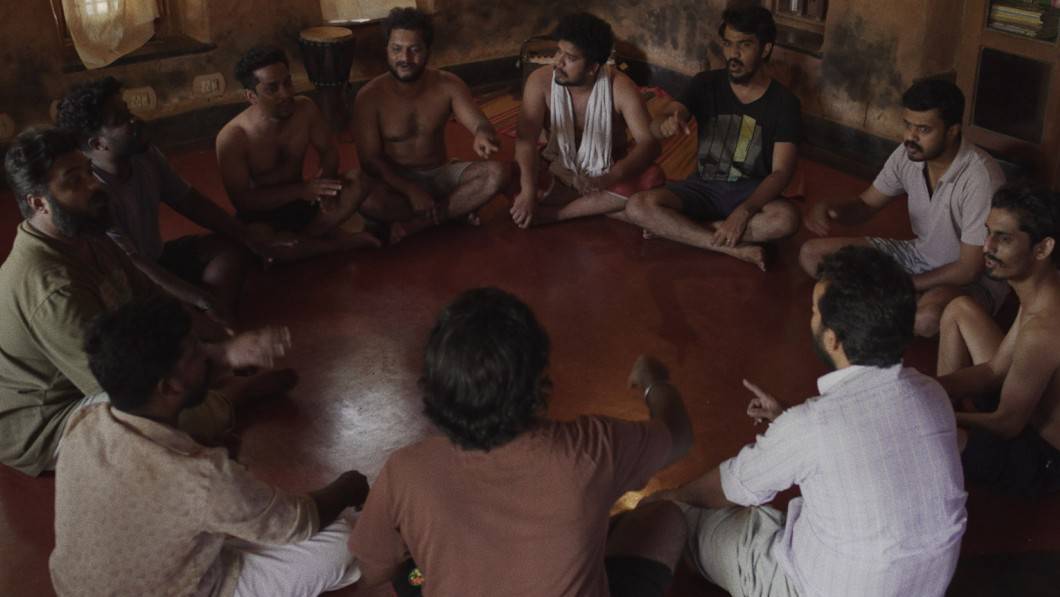Years after the Great East Japan Earthquake and Tsunami in 2011, the suppressed creativity about the events and their aftermath seems to have been unleashed in all its glory, with a number of, occasionally very interesting productions, dealing with the whole concept. In a documentary that is slightly experimental, Haruka Komori and Natsumi Seo offer their two cents, by focusing on Rikuzentakata, Iwate, a town that was completely demolished, and now has a new town being built on top of the other, in order to fit the heightened sea wall that surrounds the area. The film had its international premiere at Sheffield IDFF.
After the destruction, the two of them chose to live and film in the town. They devised a workshop, having the four people that applied listening to what the local people have to say, staging dialogues together, and reciting stories in an avant-guarde fashion, with them appearing completely by themselves with a black background. These cycles of them talking and listening to locals, reporting what they heard through narration and telling stories that could also be their own, highlight the consequences of the disaster, as much as the experiences people who survived had during the explosion and the subsequent tsunami. Furthermore, between these types of footage, the directors show extended recordings of the rebuilding of the town, through a number of rather impressive, frequently panoramic shots, which highlight the excellent work done in the cinematography by Komori and Yusuke Furuhara, who was also in charge of the sound.
Lastly, Seon has also included a somewhat personal story in the film, which gives it its first title, with the intermingling of all the aforementioned elements resulting in a somewhat experimental, but definitely intriguing approach that combines the documentary with the feature film and the stage play on occasion.
Through this approach, the directors manage to communicate the feelings and thoughts of the people of the area rather eloquently. Starting with the nostalgia about the old town, and the whole concept of it being buried, as in one story of a girl whose crying father took her at a place where she could still witness the previous structure, the film highlights the trauma the disaster caused, but also the resolution to leave it behind and rebuild, in a rather Japanese trait.
The stories about the efforts of the firemen to save people and particularly the attitude of the head of the fire department of the town, the actions of a bar owner and the joy of the people who manage to return after leaving in temporary housing for years, creates a rather captivating portrait. Furthermore, it also highlights the occasional difference of mentality, as some want to completely forget the past and others want to rebuild it exactly as it was. This aspect is also highlighted by the festival that takes place in the area and is dedicated to the dead of the disaster, a celebration that many find it very difficult to attend, at least in its first years.
These antithetical sentiments of regret, resolve, nostalgia, and need to forget are quite well communicated throughout the movie, with Komori and Fukuhara's editing joining them in the most entertaining way, allowing the documentary to flow without being repetitive. Furthermore, the circle that begins with the train arriving in the beginning closes artfully at the end, with the scenes during the credits seeming to state that life still goes on.
“Double Layered Town / Making a Song to Replace Our Positions” can be a bit confusing at times, about what is story and what reality, but the approach is intriguing and entertaining, and the artfulness rather evident, resulting in a movie that definitely deserves a watch.















